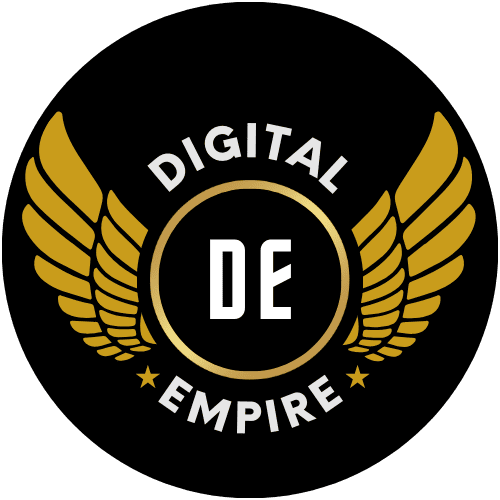
In today’s digital age, content marketing has emerged as a vital strategy for small businesses seeking to enhance their market presence, attract more customers, and increase sales. Unlike traditional marketing, content marketing focuses on creating and distributing valuable, relevant, and consistent content to attract and retain a clearly-defined audience. This approach not only helps in building trust and connecting with your customer base but also boosts your online visibility. Let’s explore how small businesses can craft an effective content marketing strategy tailored to their unique needs.
Understanding Your Audience
The first step in any successful content marketing strategy is understanding who your audience is. This involves more than just knowing basic demographics; it’s about understanding their behaviors, preferences, and pain points. Small businesses can conduct audience research through surveys, social media listening, and analyzing interactions on their existing channels. Tools like Google Analytics and social media analytics provide invaluable data about who your audience is and how they interact with your content. This information allows you to tailor your content to meet the specific needs and interests of your audience, making it more engaging and effective.
Setting Clear Goals and Objectives
For content marketing to be effective, it must be driven by clear goals and objectives. Whether it’s increasing brand awareness, generating leads, or establishing industry authority, having well-defined goals will guide your content strategy and help you measure success. Utilize the SMART criteria—Specific, Measurable, Achievable, Relevant, Time-bound—to set objectives that are precise and manageable. For instance, a goal might be to increase website traffic by 30% within six months using targeted blog posts and SEO strategies. Clear objectives keep your content focused and align your marketing efforts with your business goals.

Developing a Content Marketing Plan
A structured content marketing plan is essential to execute your strategy effectively. Begin by creating a content calendar that outlines what to publish, when, and on which platforms. This should include major content types such as blog posts, videos, podcasts, and social media updates. Plan your topics around key industry events, product launches, and relevant seasonal themes. Additionally, use tools like Trello or Asana to keep track of content creation, publication dates, and marketing tasks. This organized approach ensures that you maintain a consistent and timely engagement with your audience, which is crucial for building lasting relationships.
Creating Quality Content
The cornerstone of content marketing is producing content that your audience finds valuable. For small businesses, this means focusing on quality over quantity. Start by identifying issues that matter to your customers and offering real solutions through your content. Diverse formats like how-to guides, tutorials, expert interviews, and customer testimonials can make your content appealing and helpful. Furthermore, ensuring your content is well-researched, thoughtfully written, and professionally presented will elevate your brand’s credibility and keep your audience coming back for more.
Optimizing for Search Engines
For small businesses, visibility is key, and optimizing content for search engines (SEO) is a crucial step towards achieving it. SEO involves enhancing your content so it ranks higher in search engine results, making it more likely to be seen by potential customers. Start by incorporating relevant keywords that your target audience might use to find your services or products. However, it’s important to use them naturally within high-quality content. Additionally, optimize your meta descriptions, URLs, and headers to improve your chances of ranking well. Free tools like Google Keyword Planner or Yoast SEO can help you refine your SEO strategies without needing a large budget.

Leveraging Social Media
Social media offers a powerful platform for small businesses to share their content and engage directly with their customers. To maximize its benefits, choose platforms where your target audience is most active, whether it’s Facebook, Instagram, LinkedIn, or Twitter. Tailor your content for each platform to suit its unique format and audience preferences. For instance, short, engaging videos may work better on Instagram, while in-depth articles might resonate more on LinkedIn. Regularly interacting with followers by responding to comments and messages can also foster a community feeling, encouraging loyalty and repeat business.
Measuring Success and Adjusting Strategies
To understand the effectiveness of your content marketing efforts, it’s crucial to measure your performance against your objectives. Use analytics tools to track metrics such as page views, shares, engagement rates, and conversion rates. These insights will help you determine what types of content resonate best with your audience and which strategies may need tweaking. For instance, if a particular type of blog post drives a high number of conversions, it might be beneficial to create more content with a similar format or topic. Regularly reviewing these metrics allows you to continually refine and optimize your content marketing strategy.
Conclusion
Effective content marketing for small businesses isn’t just about creating good content; it’s about creating strategic content that aligns with both your business goals and the needs of your target audience. By understanding your audience, setting clear goals, developing a detailed plan, producing quality content, optimizing for SEO, leveraging social media, and regularly measuring your results, you can build a robust content marketing strategy that fosters growth and enhances customer engagement. Remember, the key is to be patient and persistent. Content marketing is a long-term strategy that can yield significant rewards if done right.






